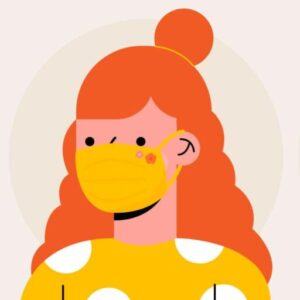
Blog 3 the artists and designers of the eighties visual examples
blogIn the context of art history, there is no "progress" or "wrong" statement for a particular artistic style or aesthetic norm. But the question of the subject does exist, that is, how did art history evolve, and how did aesthetic taste evolve.
In the 1980s, the new painting showed two development directions: one developed toward the "exquisite" direction and finally reached the extreme in contemporary expressionism; the other developed toward the "bad" direction, thus forming a kind of unprecedented anarchism And naive impulse-based art form. It aesthetically emphasizes "everyone can do it" and emphasizes the authentic appearance and trivial pieces of popular culture. Most of the new generation of artists who held this artistic view lived in the eastern part of Manhattan, which was immediately called the "East Village." The prosperity of East Village art is not an isolated cultural phenomenon. It is closely related to punk rock and new music that began in 1976. Young artists frequent clubs and bars that play punk rock because they find the music there is more exciting than the art displayed in the gallery.
This time I want to introduce a painter called Jutta Koether. She digs deep into the appropriation language that shaped Cologne's 80s culture and what she saw and heard after moving to New York in 1991. She has an eclectic approach to build an artistic pedigree that spans the early modern perspective. She used repeated images to spread allusions, including pixel grids, bright red paint, and untied ribbons. The meanings of these metaphors are firm but mysterious and obscure, carrying the historical context and at the same time re-discussed by every viewer who sees Koether's works. She devotes herself to the past of the media and the present that is revealed, striving to highlight emotion, asynchrony, and imbalance and open up a new and utterly contemporary space for painting.

Neue Frau,2019
"Neue Frau" and "Neuer Mann," both of which were made in 2019, have the same size as "Addition," but they are vertical compositions, expressing Cotel's views on "new women" and "new men." Avant-garde artists have actively explored these two concepts, committed to combining art and life, and in the process innovating the two. "New Women" is set in the Lower East Side of Manhattan, with ribbon loops covering the mural of the far-sighted politician Alexandria OcasioCortez. And "New Men" depicts the bodies of two men; one is falling with a ribbon wrapped around the body, while the other is standing with the fingers of his left hand pointing upwards. This mysterious gesture has also appeared in Leonardo da Vinci's paintings. In the middle, it implies that Leonardo da Vinci regards painting as a way of thinking with his hands, while the artist is parasitic in the painting, integrating the mind, body, and image into one. The standing man is surrounded by a riot of colors, holding a palm tree, which may suggest Christ or revival, just like what grows out of concrete in front of the woman who resembles Cortez in "The New Woman." A fragile and tough plant.
